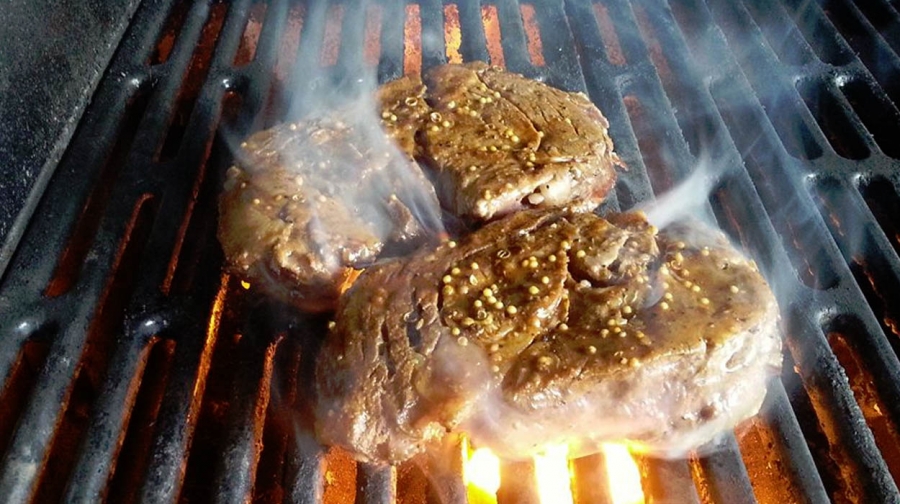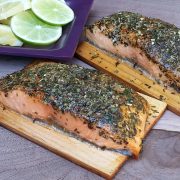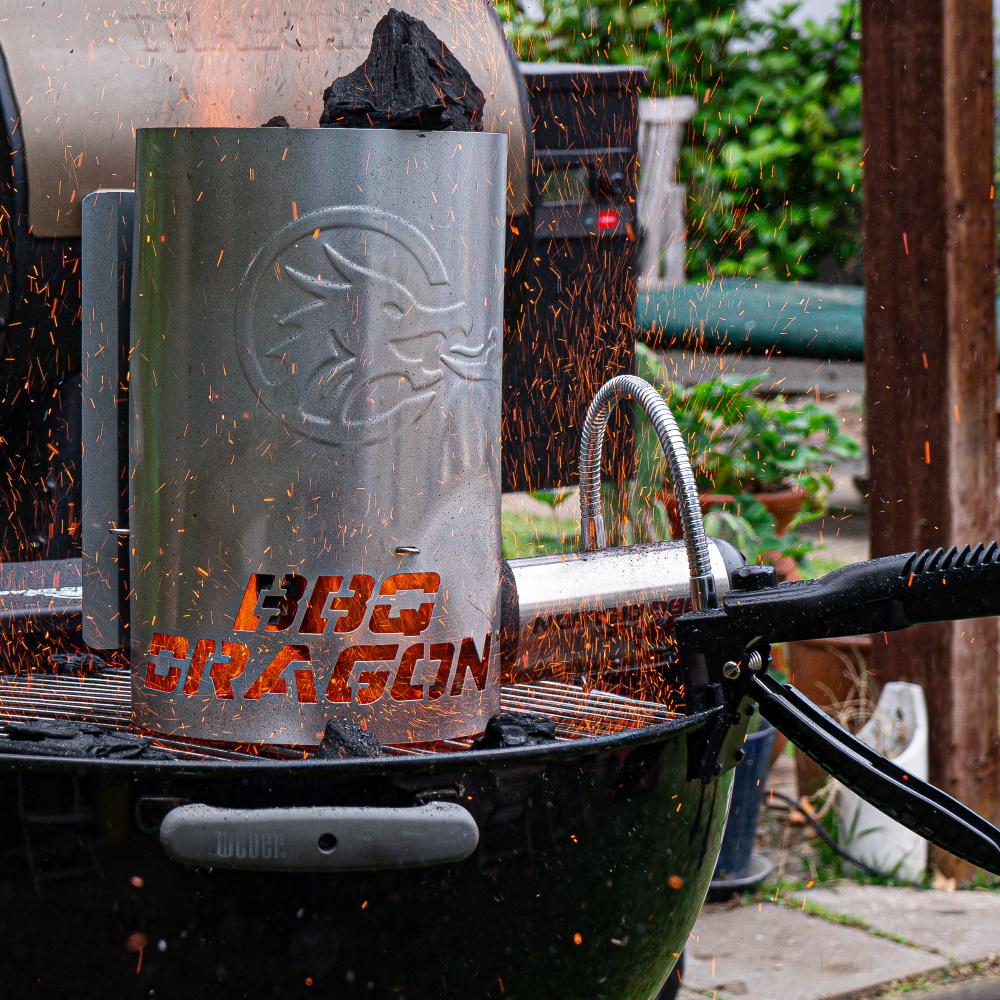Never Worry about Grilling Temperatures Again!

So, you’re sitting around grilling with the family or a group of friends and the conversation turns towards how everyone wants their steak cooked. Suddenly you’re bombarded with several requests on “doneness” and you’re not sure on how to proceed! Someone requests Rare while another person orders Medium Well and request flow in for everything in between.
Now you’re asking yourself… “Exactly what is rare, medium, medium well, or well done? And, does medium mean the same thing when it comes to cooking beef or pork… or chicken… and even fish? Do those terms crossover to other cuts of meat?”
That’s a whole bunch of questions for a grilling session but the good news is that BBQ Dragon has done all of the research for you!”
Why Internal Temperatures Matter!
First, for the most part, when people speak in terms of “rare” to “well done”, they are talking about how a person wants a beef steak or beef hamburger cooked. And, that means to what internal temperature the meat is cooked to. For the basic info, the best place to start is the USDA which has recommended internal temperatures on just about every raw food that needs to be cooked before you can eat it! More on that below… as BBQ Dragon has you covered
The reason the USDA recommends certain internal temperatures is simple – meat cooked to a predetermined internal temp, dependent on what type of meat, kills bad stuff and keeps people from getting sick. Keep this thought in mind when it comes to safe cooking temps as well as all aspects of serving food safely. Here’s the boiled down reminder you can tuck away in your grilling and smoking memory bank.
“You want people to remember how much they enjoyed a great meal, conversation, and spending time will friends and family! They don’t want to remember your cookout because it ended with them taking a trip to the emergency room several hours later.”
The USDA has set recommended temps for various meat selections but not everyone likes their steaks cooked well done. You can use thermometers or even the “hand tenderness” test. Again, BBQ Dragon has you covered by making any form of “hand tenderness” tests irrelevant.
The Palm of Your Hand Test
Yes, pushing on the palm of your hand and comparing it to how the cut of meat you are grilling mimics that feel does work when determining how “done” your steak is. And there’s the finger test which is a variation on the palm test. The basic idea is when you press your finger into different areas of the palm of your other hand then you’ll get an idea about how “firm” a steak will be during the cooking/grilling process. It’s the same with the finger test.
For example, that mushy place between your thumb and first finger is often considered raw or very raw and just about everything else on the palm ranges from rare to medium. The area below your thumb can be considered medium to medium well. Now, stretch out your loose fingers and press the same places. The “doneness” just changed from medium well, too well done, and all the way to shoe leather! There are tons of videos online showing variations of these methods.
The Actual Chemical/Cooking/Grilling Process

In general, the meat gets tougher and harder to press down as it cooks. Picture a raw steak in your mind as you place it on the grill – it’s loose and floppy. Then, if you pull it off after a turn and a few minutes of grilling on both sides… it’s still a bit floppy but firmer. The inside is still loose but the outside has gone through a cooking process, like a chemical process, and the fibers and tissue that were exposed to the heat have contracted.
Cook it longer and that process continues on the outside and spreads to the inside. Now you have a firmer steak as the connective fibers and tissue react. Now, let’s say the steaks are on the grill and you forget about them. I know, that’s a stretch… who could forget about steak on a grill? Pretend it’s because your favorite baseball team scores a three-run homer, or your driver took the lead, or a water balloon fight breaks out. You then remember the steaks and open the lid, grab the steak… and it’s firm and hard. You just shot past well done!
As I said, the palm tenderness guide is a neat system and can work with if you practice and are able to compare what you see and feel with your palm and a finger to holding a spatula and pressing on a burger or steak. Chefs, and the guys that man the grill at your local steakhouse, are good at it because they do it all of the time. But guess what – most of them also use an instant read thermometer! And BBQ Dragon has you covered with the Grilling and Smoking Temperature Guide and BBQ Dragon Instant Read Thermometer!
BBQ Dragon Easy Magnetic Guides

The BBQ Dragon Meat Temperature Guides cover grilling and smoking temps! Both are small, easy to read, magnetic so it sticks on the grill as well as the fridge. Plus, everything is organized by meat type and provides serving temperature suggestions based on the type of meat. The Grilling Guide even includes the USDA’s minimum suggested cooking temperature. Cooking and serving suggestions are also on the guides. The BBQ Dragon Smoking guide has two charts: a temperature guide based on meat type and a wood type guide for each meat.
The temperature guide includes smoking temp., target internal temp., USDA minimum temp., and cooking suggestions. Our wood type guide includes information on flavor strength and profile and what meats we recommend with which woods. These BBQ Dragon magnets are easy to read because they are designed small but with an extra large feel and have an easy-to-read font.
You can post these magnets on your refrigerator or even on your grill or smoker. Pair these meat temperature magnets with BBQ Dragon’s Instant-Read Meat Thermometer or Smartphone Connected Meat Thermometer to never over or undercook your meat.
Staggering Steaks
So, the orders are in for how everyone wants their steak cooked…now what? It’s simple, stagger the cuts and make use of cooler areas on your grill. Well Done steaks go on first, Medium follows, and rare steaks hit the grill last. Staggered cooking times make things simple. And, if a cut seems to be cooking to fast then simply move it to a cooler area on the grill.
The best way to grill steaks to desired internal temps is to combine everything mentioned above but finish off with certainty with the BBQ Dragon grilling temperature and smoking guides and your choice of BBQ Dragon thermometers! Enjoy every chance you have to grill with parents, family, and friends.
Author Bio: Kent Whitaker, also known as “The Deck Chef,” is an award-winning culinary writer and cookbook author. He’s also penned Young Reader, NASCAR and History titles. The former winner of the Emeril Live Food Network Barbecue Contest also covers football, motorsports, and bass fishing. Kent currently lives in East Tennessee with his wife, son, and a couple of dogs that love when he fires up the smoker or grill. You can reach out to Kent at www.thedeckchef.com, Facebook, Instagram, and Twitter.


 BBQDragon Kent Whitaker
BBQDragon Kent Whitaker 


 Kent Whitaker
Kent Whitaker 
 Kent Whitake
Kent Whitake 


Hey Kent, I enjoyed reading your article on grilling temperatures and completely agree with your post. I’d like to add ‘Food Safety’ as an important element to consider when grilling anything. Here’s few tips on how to avoid any foodborne illness from affecting your guest at the next outdoor BBQ.
Link : https://foodsafe4u.com/be-the-bbq-master-without-poisoning-your-guests/